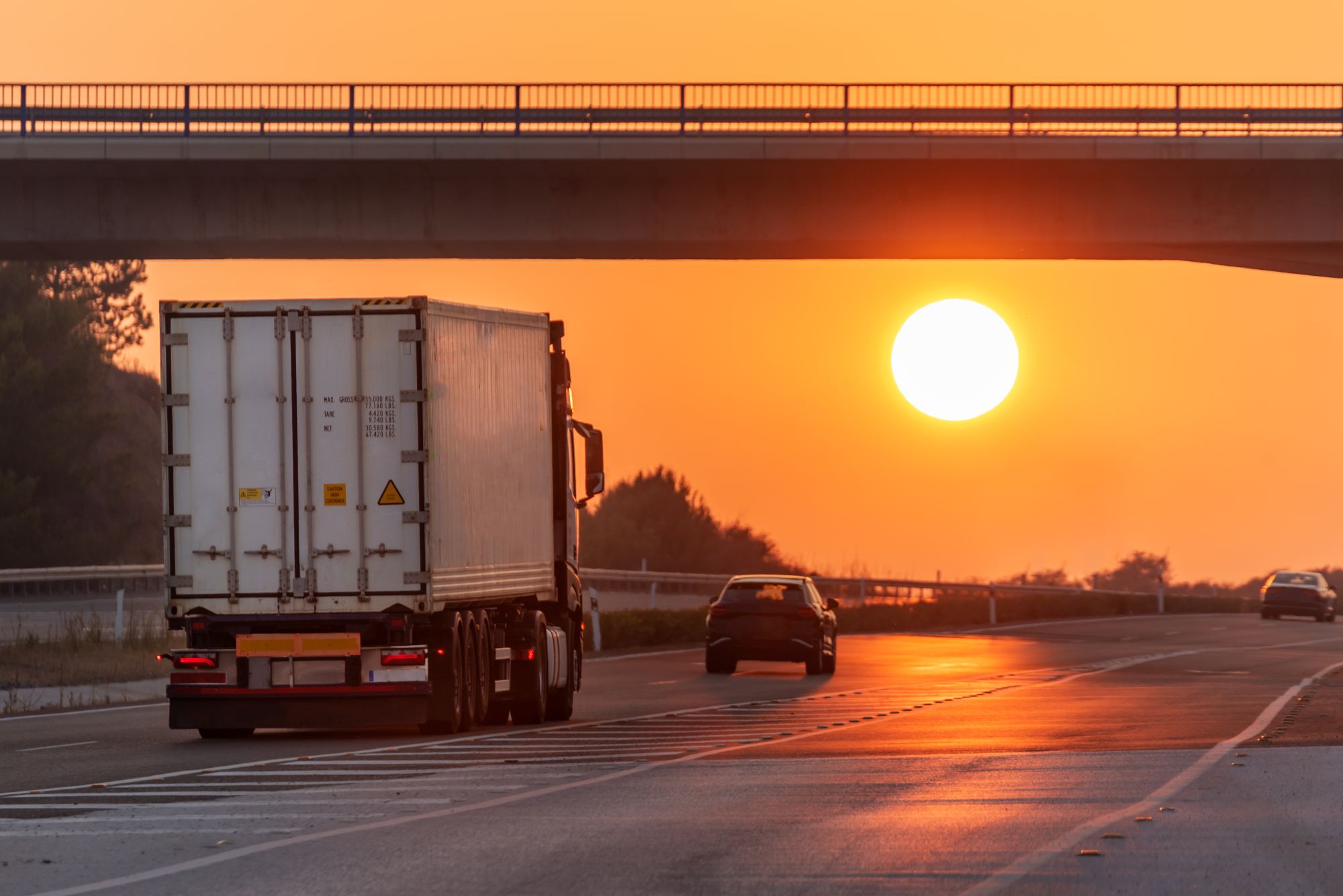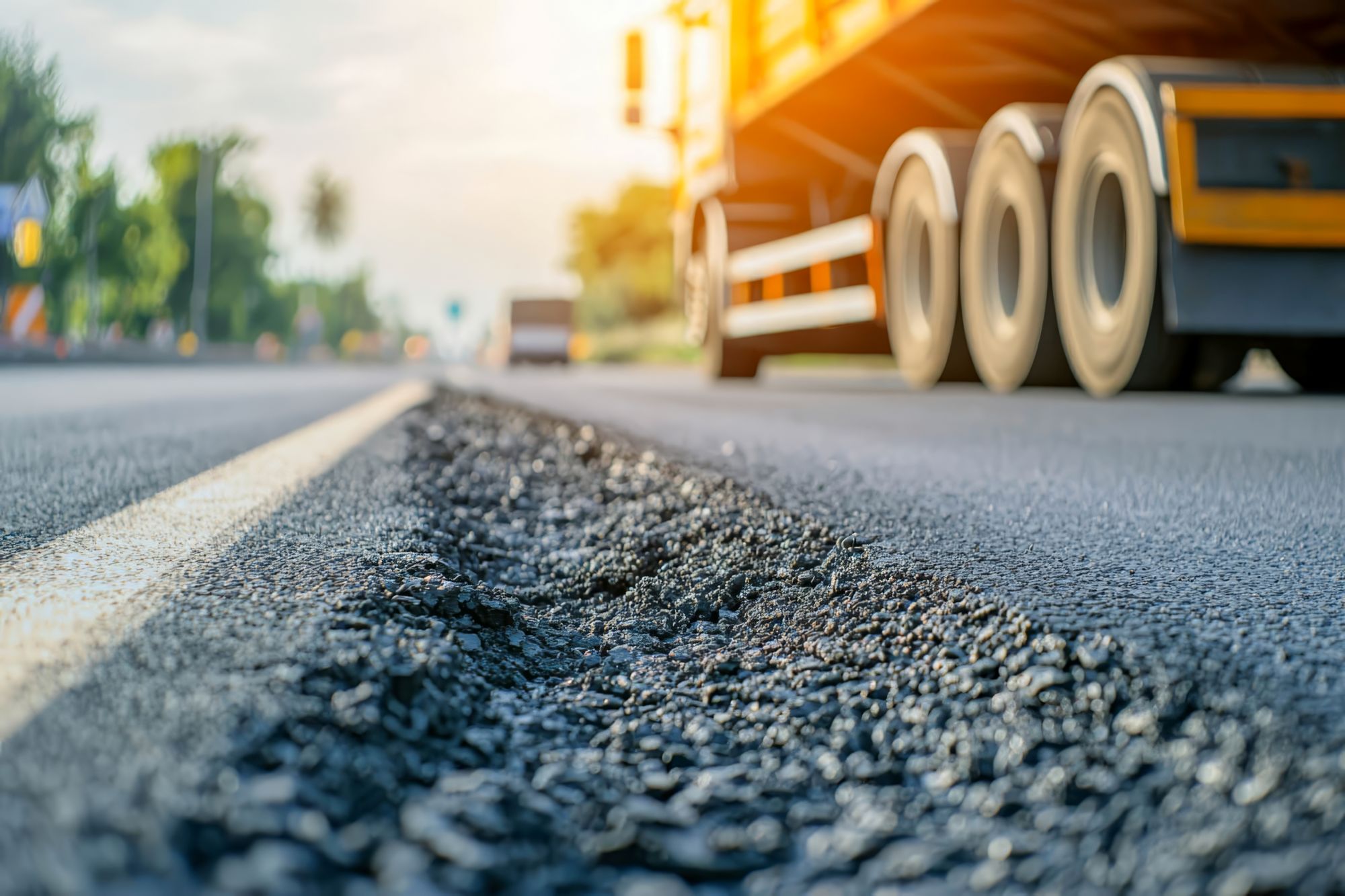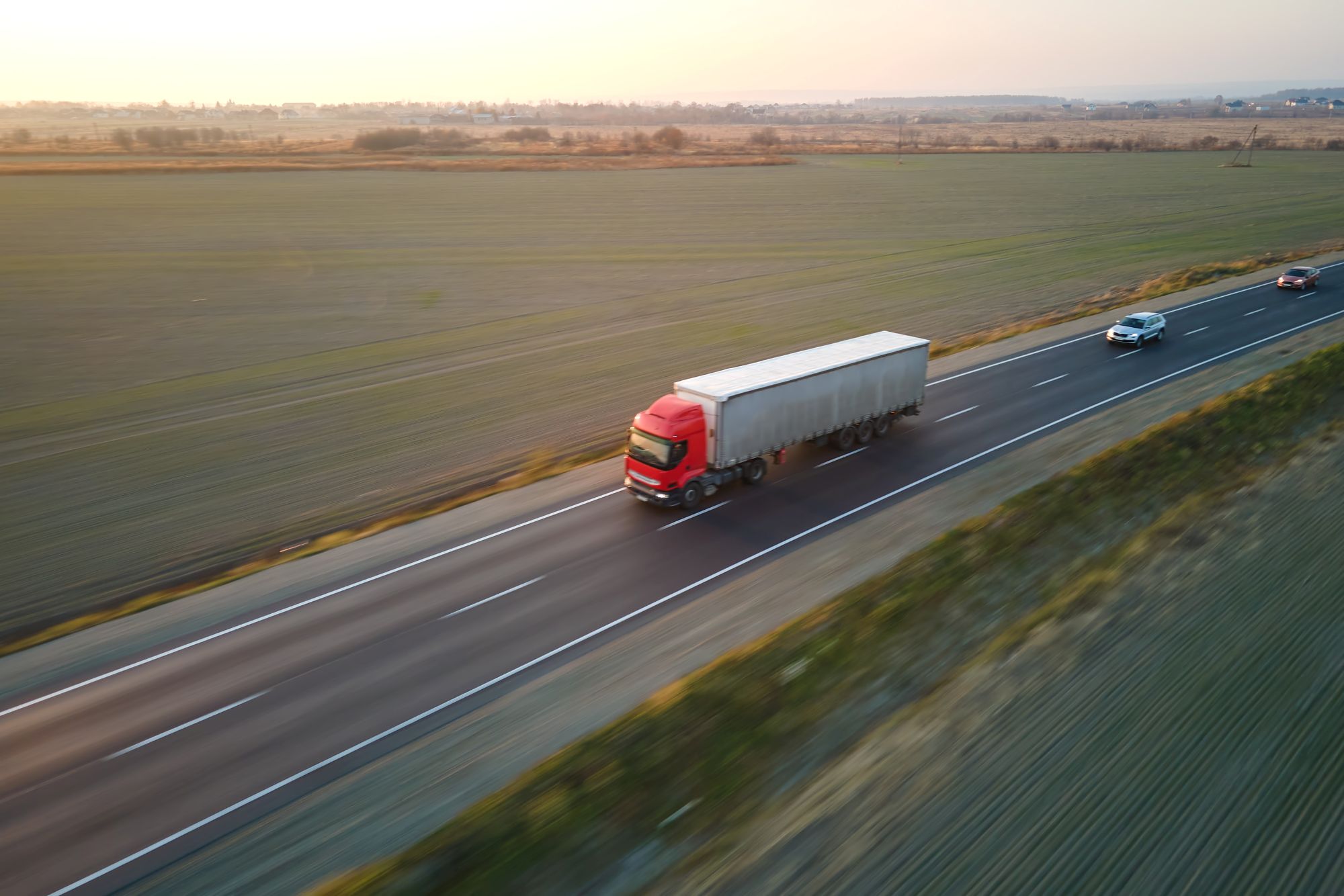
Guest
L'impact de la canicule sur la mobilité en Europe : comment garder une longueur d'avance ?
Créée: 31/07/2025
•
Mise à jour : 31/07/2025
Les routes européennes sont en train de cuire - et la chaleur ne fait qu'augmenter. Sur tout le continent, le mois de juillet 2025 a été marqué par des températures record, des pannes d'infrastructures et des perturbations des transports d'une ampleur sans précédent. Pour les opérateurs de flotte et les conducteurs professionnels, le défi n'est plus théorique. Les chaleurs extrêmes sont là et elles remodèlent le paysage de la mobilité en temps réel.
Les effets sur la santé et les signaux climatiques de la vague de chaleur de cette année ont fait couler beaucoup d'encre. Mais on s'est beaucoup moins intéressé à la façon dont elle affecte la logistique, les réseaux de fret et les personnes qui assurent le transport transfrontalier des marchandises.
Cet article explore la façon dont les vagues de chaleur perturbent le secteur du transport routier en Europe - de la fonte du macadam et des autoroutes fissurées aux incendies de forêt, en passant par les problèmes de sécurité des conducteurs et les retards de livraison - et propose des conseils pratiques pour aider les flottes à rester opérationnelles, résilientes et à avoir une longueur d'avance.
Les vagues de chaleur deviennent la nouvelle norme
Selon l'[Organisation météorologique mondiale] (https://wmo.int/media/news/extreme-heat-grips-europe), l'Europe connaît régulièrement des chaleurs extrêmes, avec des températures bien supérieures aux normales saisonnières. Au cours de la première semaine de juillet 2025, l'Allemagne a enregistré [des maxima supérieurs à 39°C] (https://en.wikipedia.org/wiki/2025Europeanheatwaves), tandis que l'Espagne et le Portugal ont connu des températures supérieures à 46°C au cours du mois. L'Europe, dans son ensemble, se réchauffe à un rythme environ [deux fois supérieur à la moyenne mondiale] (https://www.logisticsbusiness.com/transport-distribution/extreme-heat-puts-supply-chains-under-pressure/).
Ces conditions ne sont pas seulement inconfortables, elles perturbent les opérations. Les recherches citées par Logistics Business montrent que les vagues de chaleur sont un facteur de risque croissant pour les opérations de fret, réduisant le bien-être des conducteurs, endommageant les cargaisons et retardant les livraisons.
En conséquence, il est de plus en plus difficile de transporter en toute sécurité des marchandises sensibles à la température, telles que les denrées alimentaires, les produits pharmaceutiques et les produits électroniques. Les opérateurs constatent une augmentation des taux de détérioration et des pénalités de retard. La situation est particulièrement complexe dans les régions où les réseaux électriques sont mis à rude épreuve par l'augmentation de la demande de refroidissement, ce qui réduit la fiabilité de la chaîne du froid.
Des routes qui fondent et des autoroutes qui se fissurent
L'un des signes les plus évidents de l'impact de la chaleur sur la mobilité est apparu au début du mois de juillet, lorsque des tronçons du réseau autoroutier allemand ont commencé à se fissurer sous la pression de la dilatation thermique. Des tronçons des autoroutes A1, A9 et A10, entre autres, ont été fermés pour des réparations urgentes car [les dalles de béton se déformaient et les joints se rompaient] (https://www.dw.com/en/germanys-autobahns-crumble-in-early-summer-heat/a-44050774) - une conséquence directe de la vague de chaleur prolongée qu'a connue le pays.
Avec l'augmentation des températures au sol et l'assèchement de la végétation, les incendies de forêt deviennent une caractéristique régulière - et dangereuse - des étés européens. Selon le résumé de la vague de chaleur européenne de 2025 de Wikipedia, des incendies ont éclaté dans le sud de l'Espagne, de l'Allemagne et de la Grèce, provoquant des évacuations massives et la fermeture temporaire des principaux axes routiers et postes-frontières.
En juin 2025, l'[A939 en Écosse a été fermée] (https://www.firescotland.gov.uk/news/update-on-wildfire-incidents-across-highland-and-moray/) en raison d'incendies de forêt, tandis que des incendies ont fermé plusieurs [routes et tunnels routiers autour de Marseille] (https://www.theguardian.com/world/2025/jul/08/marseille-airport-cancels-all-flights-as-wildfire-encroaches-on-city) en France. Ces fermetures ne créent pas seulement un chaos dans le trafic, elles obligent les poids lourds à se détourner, souvent par des routes étroites et inadaptées qui peuvent allonger la durée des trajets de plusieurs heures.
En outre, la fumée réduit la visibilité des conducteurs et présente des risques pour la santé, en particulier pour ceux qui passent de longues heures en cabine avec un système de filtration de l'air inadéquat. Dans de nombreuses régions, les services d'urgence sont surchargés, ce qui entraîne des retards dans le dégagement des routes touchées ou la gestion des déviations.

Sécurité des conducteurs
Les risques pour l'infrastructure s'accompagnent de risques pour les personnes. Les chauffeurs professionnels sont particulièrement vulnérables au stress thermique, à la déshydratation et à la fatigue. Le [propre guide d'été] (https://snapacc.com/newsroom/a-truck-drivers-guide-to-summer-in-europe/) de SNAP pour les conducteurs souligne les dangers de la surchauffe des cabines, les contraintes liées aux longues heures de travail sous des températures élevées et l'importance des systèmes de refroidissement et du repos.
En Europe du Sud et de l'Est, de nombreuses infrastructures routières sont mal équipées pour assurer le bien-être des conducteurs pendant les vagues de chaleur. Les aires de repos climatisées, les parkings ombragés et l'accès à l'eau ne sont pas garantis, ce qui rend le [réseau de lieux vérifiés et confortables] du SNAP (https://snapacc.com/map/) plus important que jamais.
"La canicule de cet été est un signal d'alarme", déclare Raquel Martinez, directrice des ventes pour l'Europe chez SNAP. "Les systèmes de transport européens ont été conçus pour un climat plus frais. Mais nous ne reviendrons pas en arrière. Les flottes qui s'adaptent maintenant - avec les bons outils, les bonnes stratégies de repos et la bonne technologie - seront celles qui prospéreront".
Les interdictions de circuler pour les camions commencent dans toute l'Europe
En réponse à la chaleur, plusieurs pays ont introduit ou prolongé des interdictions de circuler pour les camions déclenchées par la chaleur. Comme le rapporte [TrafficBan.com] (http://trafficban.com), la Bulgarie et la Hongrie ont imposé des restrictions aux poids lourds pendant la journée lorsque les températures sont montées en flèche en juillet 2025. Des restrictions ont également été appliquées aux poids lourds sur certaines routes vulnérables pendant des périodes déterminées.
En outre, les interdictions de circuler pour les camions en Allemagne, en France, en Pologne et en Italie, liées aux jours fériés, aggravent la congestion estivale. Tous les détails sont disponibles sur le site Trafficban.com, qui répertorie les restrictions régionales et temporelles en vigueur sur le continent.
Pour les conducteurs et les planificateurs, ces interdictions créent un patchwork de zones de conformité et de limitations temporelles qui nécessitent une navigation prudente et des outils de planification actualisés.
Impact sur l'assurance
Face à l'augmentation des risques liés aux chaleurs extrêmes, les assureurs commencent à réévaluer leur exposition. Cela devrait avoir une incidence sur l'ensemble des primes. La couverture des marchandises en transit est sous pression, en particulier pour les chargements sensibles à la température, avec davantage de demandes d'indemnisation pour détérioration et dépassement des délais de livraison. Les coûts de l'assurance automobile pourraient également augmenter en raison de l'accroissement des demandes d'indemnisation pour les pannes et les accidents liés à la chaleur.
Par ailleurs, la responsabilité des employeurs fait l'objet d'un examen de plus en plus approfondi, en particulier si les conducteurs ou le personnel souffrent de problèmes de santé liés à la chaleur en raison de dispositions inadéquates en matière de bien-être. Ensemble, ces tendances pourraient se traduire par des primes plus élevées et des conversations de renouvellement plus difficiles pour les exploitants qui n'ont pas mis en place des plans de résilience clairs.
Comment garder une longueur d'avance sur les vagues de chaleur ?
Chez SNAP, nous pensons que la clé pour surmonter les vagues de chaleur en Europe réside dans la préparation, la planification et la gestion proactive du bien-être.
Voici ce que les opérateurs peuvent faire :
**Utiliser les données météorologiques en temps réel pour aider les conducteurs à éviter les itinéraires à risque.
Équiper les conducteurs en fonction des conditions: Remplir les véhicules d'eau, de matériel d'ombrage et de kits de refroidissement d'urgence.
Vérifier les réglementations quotidiennement: Restez informé des changements d'interdictions de circulation des camions aux frontières en utilisant des sources vérifiées comme Trafficban.com.
**Encourager les conducteurs à utiliser des applications telles que [intruck] (https://intruckapp.com/) pour localiser les installations bien équipées et climatisées à travers l'Europe.
Entretenir les véhicules pour la chaleur: Portez une attention particulière aux pneus, aux systèmes de refroidissement et à la performance de la batterie lors de l'entretien, en particulier pour les véhicules électriques ou hybrides.
Examiner les plans d'assurance et de risque: S'assurer que les polices tiennent compte des retards liés au climat, de la détérioration des cargaisons et des dommages causés par les incendies.
Préparez-vous dès aujourd'hui aux vagues de chaleur
Consultez notre carte interactive SNAP ou téléchargez l'application intruck dès aujourd'hui. Avec des milliers de partenaires de confiance dans toute l'Europe, c'est votre raccourci vers des arrêts plus sûrs - quelle que soit la température.



